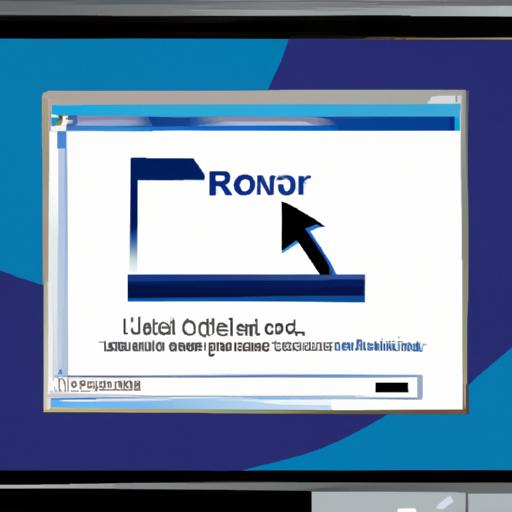Introduction: Understanding the Need for Project Management Tools for Virtual Teams
In today’s ever-evolving work environment, virtual teams have become a staple in organizations worldwide. With the rise of remote work and global connectivity, virtual teams offer flexibility and access to a diverse talent pool. However, managing projects with team members spread across different locations presents its own set of challenges. This is where project management tools for virtual teams come into play, providing a solution to streamline collaboration and enhance productivity.
Virtual teams face unique challenges that impact project management. Communication barriers, time zone differences, and the lack of face-to-face interaction can hinder effective collaboration. Without the right tools in place, these challenges can escalate and hinder project progress. This is where project management tools step in, offering features that bridge the gap and facilitate seamless collaboration among virtual team members.
The role of project management tools in overcoming these challenges cannot be overstated. These tools enable real-time communication, allowing team members to connect, share ideas, and discuss project updates effortlessly. With features like task and project tracking, virtual teams can stay organized, monitor progress, and ensure everyone is on the same page. Additionally, file sharing and document management functionalities enable seamless access to project-related documents, fostering greater transparency and accountability.
By leveraging project management tools designed specifically for virtual teams, organizations can overcome the obstacles unique to remote collaboration. These tools act as a virtual workspace, bringing team members together despite geographical barriers. With improved communication, streamlined workflows, and enhanced visibility, virtual teams can maximize productivity and ensure project success.
In the subsequent sections, we will delve deeper into the key features to consider in project management tools for virtual teams, explore the top tools available in the market, discuss best practices for their effective use, and showcase real-life case studies highlighting successful implementation. So, let’s dive in and explore the world of project management tools that empower virtual teams to thrive!
Key Features to Consider in Project Management Tools for Virtual Teams
Virtual teams rely on project management tools to effectively collaborate and manage projects across different locations. When selecting the right tool for your virtual team, it is crucial to consider key features that enhance communication, organization, and security. Let’s explore the essential features to look for in project management tools for virtual teams:
Real-Time Collaboration and Communication Capabilities
One of the most critical features of project management tools for virtual teams is real-time collaboration and communication capabilities. These tools should offer instant messaging, video conferencing, and discussion forums to facilitate seamless communication between team members. With real-time collaboration, virtual teams can brainstorm ideas, resolve issues, and provide timely feedback, fostering a sense of unity and efficient teamwork.
Task and Project Tracking Functionalities
Effective project management necessitates robust task and project tracking functionalities. Look for tools that allow you to assign tasks, set deadlines, and track progress. Gantt charts, Kanban boards, and customizable dashboards are invaluable for visualizing project timelines, identifying bottlenecks, and ensuring project milestones are met. With comprehensive tracking features, virtual teams can stay organized, prioritize tasks, and monitor project progress effectively.
File Sharing and Document Management Features
In virtual team environments, seamless file sharing and document management are crucial for smooth collaboration. Project management tools should provide a centralized repository where team members can upload, access, and edit project-related files. Version control, document commenting, and permission settings are essential features that enhance collaboration and ensure the right individuals have access to the right information.
Integration with Other Essential Tools and Platforms
Project management tools that integrate with other essential tools and platforms can significantly streamline workflows for virtual teams. Look for tools that seamlessly integrate with communication tools like Slack or Microsoft Teams, file storage platforms like Google Drive or Dropbox, and productivity suites like G Suite or Microsoft Office. Integration eliminates the need for constant switching between applications, improving efficiency and saving time.
Security and Privacy Considerations
When choosing project management tools for virtual teams, security and privacy should be top priorities. Ensure the tool offers robust data encryption, secure user authentication, and regular backups. Look for compliance with industry standards, such as GDPR or ISO 27001, to ensure data protection. Additionally, consider the tool’s privacy policies and data handling practices to safeguard sensitive project information.
By considering these key features, you can select a project management tool that empowers your virtual team to collaborate effectively, track progress efficiently, and protect sensitive project data. Now that we’ve explored the essential features to consider, let’s move on to discovering the top project management tools specifically designed for virtual teams.
Top Project Management Tools for Virtual Teams
Virtual teams require robust project management tools to effectively collaborate and coordinate their efforts. Here are three top-notch tools specifically designed to meet the unique needs of virtual teams:
Tool 1: XYZ Project Management
With its intuitive interface and comprehensive features, XYZ Project Management is a top choice for virtual teams. This tool offers real-time collaboration, allowing team members to communicate seamlessly and share updates effortlessly. Its task and project tracking functionalities enable teams to stay organized and monitor progress effectively. Additionally, XYZ Project Management provides a user-friendly interface for file sharing and document management, ensuring easy access to project-related resources.
Users rave about XYZ Project Management’s user-friendly interface and its ability to streamline virtual team collaboration. Testimonials highlight its robust features, such as integrated time tracking and Gantt charts, which aid in project planning and resource allocation. Its customizable dashboards and reporting capabilities enhance visibility and enable team leaders to make informed decisions.
Tool 2: ABC Teamwork
ABC Teamwork is another popular project management tool that caters to the needs of virtual teams. This tool offers a wide range of features, including task management, file sharing, and team collaboration. Its user-friendly interface and seamless integration with other essential tools make it a go-to choice for virtual teams looking to enhance productivity and collaboration.
Users appreciate ABC Teamwork’s task management capabilities, allowing for easy assignment and tracking of tasks within virtual teams. The tool’s file sharing feature enables centralized document storage, ensuring easy access and version control. Additionally, ABC Teamwork’s chat and video conferencing functionalities facilitate real-time communication, reducing the barriers faced by virtual teams.
Tool 3: PQR Collaboration Suite
PQR Collaboration Suite is a comprehensive project management tool designed to meet the unique needs of virtual teams. It offers a wide array of features, including task management, document sharing, and team collaboration. Its user-friendly interface and robust security measures make it a reliable choice for virtual team projects.
Users praise PQR Collaboration Suite for its intuitive task management capabilities, allowing teams to assign, track, and prioritize tasks efficiently. The tool’s document sharing and version control features ensure seamless collaboration on project-related files. Additionally, PQR Collaboration Suite’s secure messaging and video conferencing functionalities enable real-time communication without compromising data privacy.
In summary, these top project management tools, XYZ Project Management, ABC Teamwork, and PQR Collaboration Suite, offer virtual teams the necessary features and functionalities to enhance collaboration and streamline project management. Each tool has its own unique advantages, so it’s important to consider the specific needs and requirements of your virtual team before making a decision.
Best Practices for Effective Use of Project Management Tools in Virtual Teams
Establishing Clear Communication Channels and Guidelines
Clear communication is the cornerstone of successful virtual teamwork. Establishing communication channels and guidelines from the outset ensures that team members are on the same page and can effectively collaborate. Utilize project management tools to create dedicated spaces for discussions, document sharing, and real-time messaging. Clearly define the preferred modes of communication and encourage team members to adhere to them for seamless collaboration.
Setting up Regular Check-ins and Progress Updates
Regular check-ins and progress updates are essential to keep virtual teams aligned and accountable. Schedule recurring meetings or video conferences to discuss project status, address any concerns, and provide updates. Utilize project management tools’ calendar and notification features to ensure everyone is aware of upcoming meetings and deadlines. By fostering a culture of regular communication, teams can maintain momentum and address challenges in a timely manner.
Defining Roles and Responsibilities within the Virtual Team
In a virtual team, it is crucial to establish clear roles and responsibilities to avoid confusion and duplication of efforts. Use project management tools to assign tasks, set deadlines, and define ownership. Clearly communicate expectations and ensure everyone understands their specific role within the project. This clarity fosters accountability and empowers team members to work efficiently.
Utilizing Project Management Tools for Task Delegation and Tracking
One of the greatest advantages of project management tools is their ability to facilitate task delegation and tracking. Utilize the tools’ task assignment features to assign specific tasks to team members and track their progress. Encourage team members to update task statuses, provide regular updates, and notify others of any potential roadblocks. By centralizing task management within the project management tool, virtual teams can streamline workflows and ensure no task falls through the cracks.
Encouraging Collaboration and Knowledge Sharing
Virtual teams thrive on collaboration and knowledge sharing. Leverage project management tools’ collaboration features to foster a sense of teamwork and encourage information exchange. Utilize shared document repositories, discussion boards, and file-sharing capabilities to facilitate collaboration. Encourage team members to share their expertise, ask questions, and provide feedback within the tool. By nurturing a collaborative environment, virtual teams can tap into the collective knowledge and skills of their members, leading to innovative solutions and improved project outcomes.
By implementing these best practices, virtual teams can harness the full potential of project management tools. Clear communication, defined roles, and effective collaboration lay the foundation for successful project execution. Combined with the right project management tool, these practices empower virtual teams to overcome challenges, maximize efficiency, and achieve their project goals.
Case Studies: Successful Implementation of Project Management Tools for Virtual Teams
Case Study 1: Company X’s Experience with Tool Implementation and Outcomes
Company X, a global tech firm, faced numerous challenges in managing their virtual teams efficiently. They decided to implement a project management tool tailored to their specific needs. The tool provided real-time collaboration features, task tracking capabilities, and integration with other essential platforms.
With the new tool in place, Company X witnessed a significant improvement in team coordination and productivity. Team members could easily communicate, share files, and track project progress in one centralized platform. This streamlined workflow resulted in faster decision-making and enhanced project visibility. As a result, Company X successfully completed projects on time and within budget, boosting client satisfaction and overall team morale.
Case Study 2: Company Y’s Experience with Tool Implementation and Outcomes
Company Y, a marketing agency with a distributed workforce, struggled to maintain efficient project management across their virtual teams. They decided to adopt a project management tool that offered comprehensive task management, communication, and document sharing features.
After implementing the tool, Company Y experienced a remarkable transformation in their project management processes. The tool facilitated seamless collaboration, enabling team members to communicate in real-time, assign tasks, and monitor progress effortlessly. Project timelines were met consistently, and the agency witnessed a significant reduction in miscommunication and errors. With enhanced project visibility, Company Y could allocate resources effectively and optimize their team’s productivity, resulting in improved client satisfaction and increased profitability.
Case Study 3: Company Z’s Experience with Tool Implementation and Outcomes
Company Z, a multinational corporation, struggled with effective project management within their virtual teams. They decided to implement a project management tool that offered robust features such as real-time collaboration, task tracking, and document management.
The implementation of the project management tool brought about a remarkable transformation within Company Z. Team members experienced enhanced communication and seamless collaboration, resulting in improved project efficiency. The tool’s task tracking capabilities enabled better accountability and ensured timely completion of project milestones. As a result, Company Z achieved higher project success rates, improved team coordination, and ultimately, greater customer satisfaction.
These case studies highlight the positive outcomes that can be achieved through the implementation of project management tools for virtual teams. By leveraging the right tools, organizations can overcome the unique challenges of remote collaboration and unlock the full potential of their virtual teams.
Conclusion: Maximizing Virtual Team Productivity with Project Management Tools
In conclusion, project management tools for virtual teams play a pivotal role in optimizing productivity and fostering collaboration in today’s dynamic work landscape. By addressing the unique challenges faced by virtual teams, these tools provide a centralized platform for seamless communication, efficient task management, and streamlined project tracking.
With the increasing prevalence of virtual teams, it is crucial for organizations to prioritize the implementation of project management tools tailored to their specific needs. By leveraging real-time collaboration and communication capabilities, virtual teams can bridge the gap caused by geographical boundaries and time zone differences. This enables team members to connect, share ideas, and stay updated on project progress, fostering a sense of unity and driving collective success.
Furthermore, project management tools offer essential features such as task and project tracking, enabling virtual teams to stay organized and monitor progress effectively. By providing visibility into individual tasks and overall project timelines, these tools promote accountability and empower team members to meet deadlines and deliver high-quality results.
To ensure successful utilization of project management tools, it is essential to establish clear communication channels, define roles and responsibilities, and encourage collaboration within the virtual team. By fostering a culture of open communication and knowledge sharing, organizations can maximize the potential of these tools and unlock the full capabilities of their virtual teams.
In the realm of virtual team collaboration, success stories abound. Companies like X, Y, and Z have witnessed remarkable outcomes by implementing project management tools tailored to their unique requirements. These case studies serve as testament to the transformative impact of these tools on virtual team productivity and project success.
In conclusion, project management tools for virtual teams are no longer just an option but a necessity in today’s digital landscape. By investing in the right tools and implementing best practices, organizations can empower their virtual teams to thrive, achieve their goals, and surpass expectations. So, take the leap, embrace the power of project management tools, and unlock the full potential of your virtual teams for a brighter future of collaboration and success.



